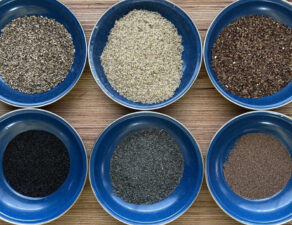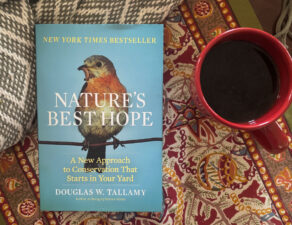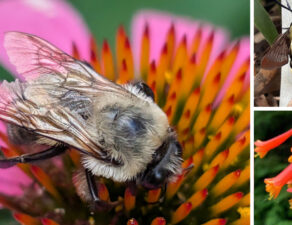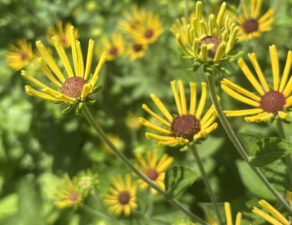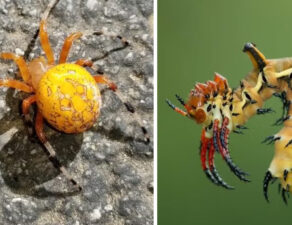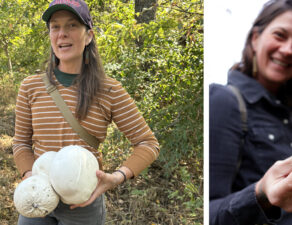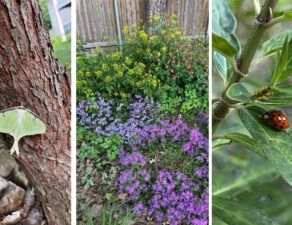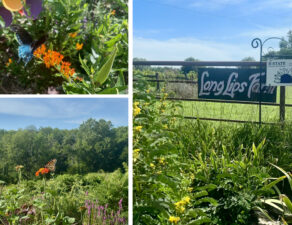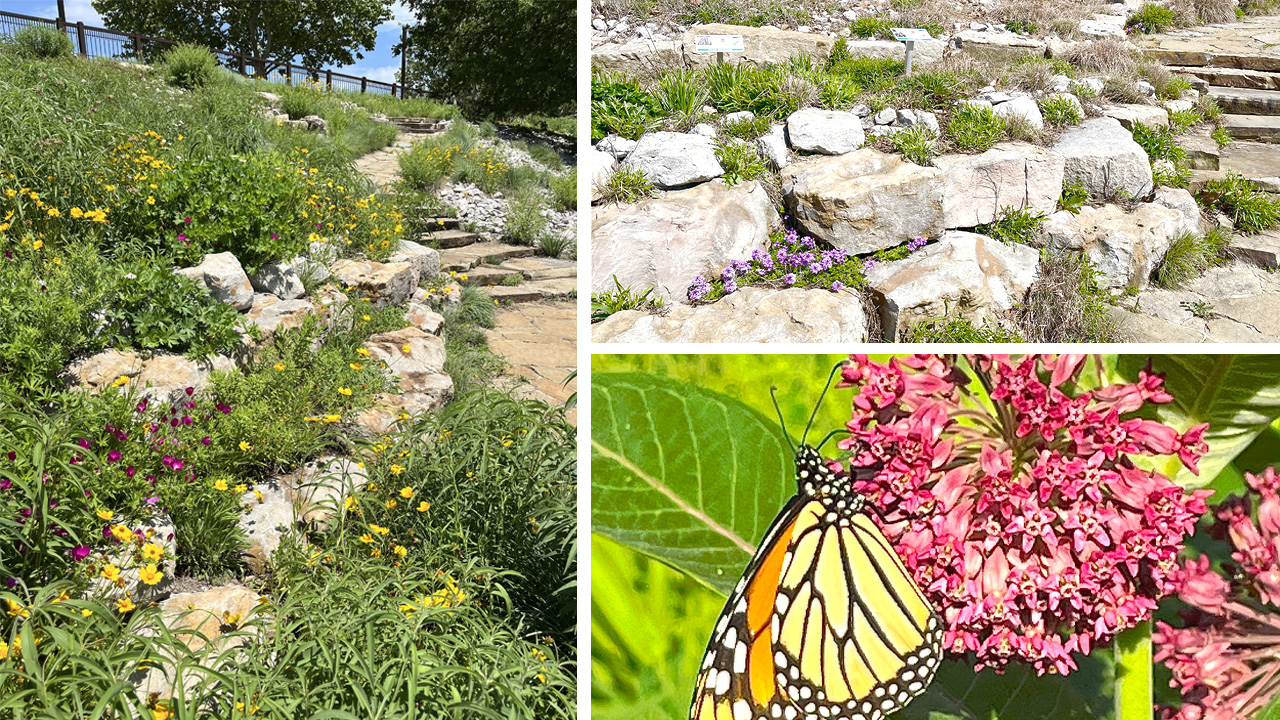
Guest Author: Craig Thompson
Photo Credit: Craig Thompson
Above Left: Flagstone pathway in May (Lanceleaf Coreopsis, Purple Poppy Mallow); Top Right: Rock outcrops with Rose Verbena and interpretive signs; Bottom Right: Monarch Butterfly on Common Milkweed
Kaw Point Park, located in Kansas City, Kansas at the confluence of the Kansas and Missouri rivers, has five gardens planted with native grasses and wildflowers. The gardens are located below the boardwalk at the park. The project was developed by Friends of Kaw Point Park (FOKPP) and completed in 2017 with help from volunteers, donations, and grants, and support from Wyandotte County Parks and Recreation. The goal of the project was to create these native gardens on a steep 25 percent slope to retain rainwater and to prevent soil erosion.
The gardens have come a long way since they were planted in 2017. Many of the wildflowers were planted to attract pollinators. Blue Wild Indigo, Purple Beardtongue, Foxglove Beardtongue, Pale Coneflower, Wild Bergamot, Rose Berbena, Lanceleaf Coreopsis, Missouri Evening Primrose, Purple Poppy Mallow, Prairie Blazing Star, Rough Blazing Star, Showy Goldenrod, Prickly Pear Cactus, Common Milkweed, Butterfly Milkweed, and Aromatic Aster are some of the wildflower species planted in the gardens. Also, native grasses like Little Bluestem, Big Bluestem, Indian Grass, Switch Grass, and Prairie Dropseed line the perimeter of the garden area.
In 2020, FOKPP was awarded a grant by the Lewis and Clark Trail Heritage Foundation. This grant provided money to purchase 20 interpretive signs for the “Historic Native Plants” project. During the Lewis and Clark Expedition (1804 – 1806), Meriwether Lewis collected and identified several plant species. Lewis received training in botany and was very good about collecting plants and describing them in his journals. For the project, FOKPP reintroduced some native grasses, wildflowers, and trees that Lewis had described in his journals and installed interpretive signs near them. Each sign provides a QR Code linked to the FOKPP website (kawpointpark.org). On the website you will find more information about how Lewis and others on the expedition described the plants.
Plants with signage at the park:
Columbine, Big Bluestem, Fragrant Sumac, Black Willow, Plains Coreopsis, Serviceberry, Wild Ginger, Aromatic Aster, Cottonwood, Illinois Bundleflower, Plains Prickly Pear, Purple Coneflower, Showy Partridge Pea, Wild Plum, Black Walnut, Elderberry, Pawpaw, Prairie Blazing Star, Rough Blazing Star, White Sage
In addition to the native gardens, we have been restoring a woodland area at the park. FOKPP removed invasive plants, like Bush Honeysuckle, and reintroduced many native wildflowers, sedges and understory trees to this area. Some native woodland species planted, like Pawpaw, were present when Lewis and Clark passed through here in September of 1806.
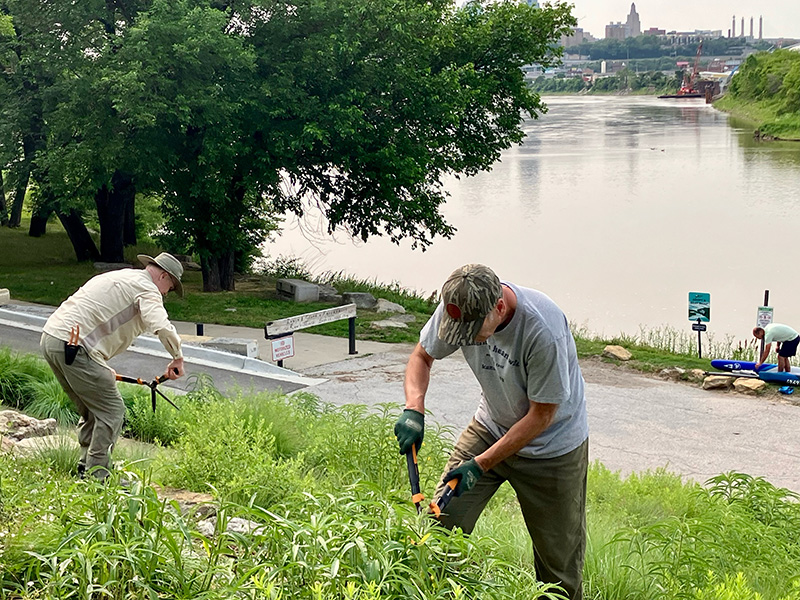
FOKPP hosts garden/cleanup events on Saturdays once a month from March through November (check out our events page for dates).
For More Information:
Contact person: Craig Thompson (cthompsun@gmail.com)
Website: kawpointpark.org
Location: 1403 Fairfax Trafficway, Kansas City, KS 66115 (Search Maps – enter Kaw Point Park from your location)
